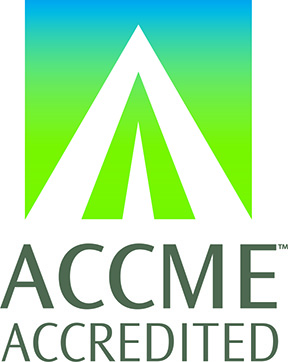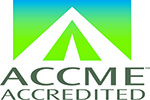
Release Date: December 8, 2017
Expiration date: June 8, 2018
Estimated Time to Complete Activity: 1.0 hour and 20 minutes
CME ACCREDITATION AND DESIGNATION
 The Cardiovascular Research Foundation is accredited by the Accreditation Council for Continuing Medical Education to provide continuing medical education for physicians.
The Cardiovascular Research Foundation is accredited by the Accreditation Council for Continuing Medical Education to provide continuing medical education for physicians.
The Cardiovascular Research Foundation designates this activity for a maximum of 1.25 AMA PRA Category 1 Credit™. Physicians should claim only the credit commensurate with the extent of their participation in the activity.
Documentation of awarded credit is provided for participants in exchange for completed activity evaluations.
![]() CME for MOC: Successful completion of this CME activity, which includes participation in the evaluation component, enables the participant to earn up to 1.25 MOC points in the American Board of Internal Medicine’s (ABIM) Maintenance of Certification (MOC) program. Participants will earn MOC points equivalent to the amount of CME credits claimed for the activity. It is the CME activity provider’s responsibility to submit participant completion information to ACCME for the purpose of granting ABIM MOC points.
CME for MOC: Successful completion of this CME activity, which includes participation in the evaluation component, enables the participant to earn up to 1.25 MOC points in the American Board of Internal Medicine’s (ABIM) Maintenance of Certification (MOC) program. Participants will earn MOC points equivalent to the amount of CME credits claimed for the activity. It is the CME activity provider’s responsibility to submit participant completion information to ACCME for the purpose of granting ABIM MOC points.
OVERVIEW
Pretreatment of patients undergoing percutaneous coronary intervention has been controversial. The decision to use P2Y12 Inhibitors has been the cornerstone treatment of patients with acute coronary syndrome. This program will look at the correct timing and modality of transition from intravenous to oral platelet inhibition in patients. Considerations for platelet inhibition before, during, and after PCI, as well as the outcomes of establishing potent P2Y12 inhibition with medication, will be discussed. DAPT selection and duration, as well as bridging antiplatelet coverage, will be reviewed. Completing this presentation, experts in the field will share tips to help the practitioner with the transition to oral P2Y12 receptor blockades.
AGENDA
Platelet Inhibition Before, During, and After PCI: Best Practices and Remaining Questions
Robert A. Harrington
Indications for Potent Platelet Inhibition: ACS and Complex PCI
Gregg W. Stone
Roundtable Discussion With Audience Q&A
Panel discussion
Practical Advice: How, Why, and When to Transition From Oral to Intravenous and From Intravenous to Oral P2Y12 Receptor Blockade
Freek W.A. Verheugt
Roundtable Discussion With Audience Q&A
Panel discussion
DAPT Selection and Duration in ACS and After PCI, With and Without Atrial Fibrillation
C. Michael Gibson
Scenarios and Recommendations for Bridging Antiplatelet Coverage
Dominick J. Angiolillo
LEARNING OBJECTIVES
By the end of this program, participants should be able to:
1) Discuss the advantages and concerns of oral platelet preloading before PCI.
2) Define intraprocedural stent thrombosis and how to prevent it.
3) Describe what the practitioner needs to know about transitioning from oral to intravenous P2Y12 receptor blockades and vice versa.
TARGET AUDIENCE
This activity is designed for interventional cardiologists, cardiac surgeons, clinical cardiologists, vascular medicine specialists, and other healthcare professionals.
ACTIVITY EVALUATION
Evaluation by questionnaire will address content, presentation, possible bias, and future educational needs.
DISCLOSURE STATEMENT
It is the policy of the Cardiovascular Research Foundation to ensure balance, independence, objectivity, and scientific rigor in all of its sponsored educational activities. Commercial support from industry does not influence educational content, faculty selection, and/or faculty presentations, and, therefore, does not compromise the scientific integrity of the educational activity.
Discussion of off-label product usage and/or off-label product use is made at the sole discretion of the faculty. Off-label product discussion and usage is not endorsed by the Cardiovascular Research Foundation or the conference directors of this activity.
Faculty participating in continuing medical education activities sponsored by the Cardiovascular Research Foundation are required to disclose to the activity audience any real or apparent conflicts of interest related to the content of their presentations. Faculty not complying with this policy are not permitted to participate in this activity.
FACULTY DISCLOSURE SUMMARY
KEY: (G/R) Grant Support/Research Contract (C/H/S) Consultant Fee/Honoraria/Speaker’s Bureau (E) Equity (R/I) Royalty/Intellectual Property Rights (S) Salary/Salary Support (O) Other Financial Benefit
Dominick J. Angiolillo: (G/R) Chiesi, (CHS) Chiesi
C. Michael Gibson (G/R) Angel Medical Corporation, Bayer AG, CSL Behring, Ikaria, Inc., Janssen Pharmaceuticals, Johnson & Johnson Corporation, Portola Pharmaceuticals (C/H/S) Bayer AG, The Medicines Company, Boston Clinical Research Institute, Cardiovascular Research Foundation, Eli Lilly and Company, Gilead Sciences, Inc., Novo Nordisk, Pfizer, Web MD, UpToDate in Cardiovascular Medicine
Robert A. Harrington: (G/R) AstraZeneca, BMS, CSL Behring, GSK, Jannsen R&D, Merck, Novartis, Portola, Sanofi-aventis, The Medicines Company, (C/H/S) Adverse Events, Amgen Inc., Bayer Healthcare Pharmaceuticals, Gilead, Merck, The Medicines Company, Vida Health, WebMD, (E) Element Science, Myokardia, Scanadu, Signal Path (Evidint)
Matthew J. Price: (G/R) Daichii-Sankyo/Eli Lilly and Company, (C/H/S) Abbott Vascular, AstraZeneca, Boston Scientific Corporation, Medtronic, St. Jude Medical, Terumo Medical Corporation, The Medicines Company, W.L. Gore & Associates
Gregg W. Stone: (G/R) Matrizyme, Ablative Solutions, Claret, Sirtex, Vascular Dynamics, Miracor, Neovasc, V-wave, BackBeat Medical, Valfix, Therox, Reva; (C/H/S) Qool Therapeutics, Caliber, Aria, Biostar family of funds, MedFocus family of funds, Micardia, Cagent, SpectraWave, Guided Delivery Systems
Freek W.A. Verheught: (C/H/S) Bayer AG, Daiichi-Sankyo/Eli Lilly and Company, Bristol-Myers Squibb
Planning Committee
Robert Blanco (Planner)
(S) Cardiovascular Research Foundation
ACTIVITY SPONSORSHIP AND SUPPORT
This program is sponsored by the Cardiovascular Research Foundation. It is supported through educational grants from Chiesi USA, Inc. and was developed without influence from commercial supporters.
HOW TO RECEIVE CME CREDIT
To obtain CME credit for this activity, participants must review all CME information, view all presentations in their entirety, and complete the Activity Evaluation Form. If you have any questions, please contact Robert Blanco at rblanco@crf.org .
